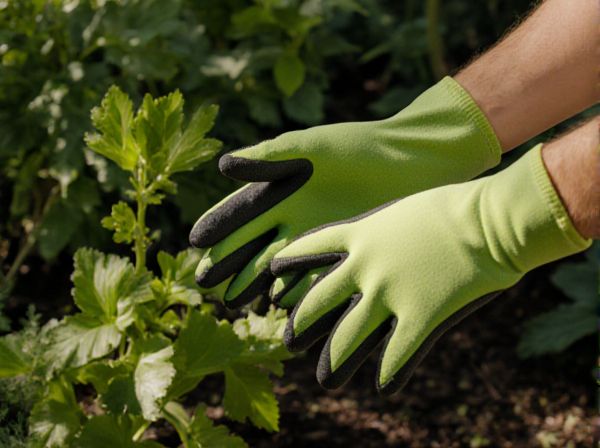
Natural Shade vs Artificial Shade Illustration
Natural shade provides a cooling environment by using trees and plants that absorb sunlight and release moisture, enhancing air quality and supporting local ecosystems. Artificial shade, such as umbrellas or awnings, offers flexible and immediate protection from the sun but lacks environmental benefits and requires maintenance. Choosing between natural and artificial shade depends on factors like location, permanence, and ecological impact.
Table of Comparison
| Feature | Natural Shade | Artificial Shade |
|---|---|---|
| Source | Trees, plants, foliage | Umbrellas, awnings, shade sails |
| Environmental Impact | Eco-friendly, supports biodiversity | May involve synthetic materials, less eco-friendly |
| Cooling Effect | Natural evapotranspiration, cooler microclimate | Blocks sunlight, limited cooling effect |
| Cost | Low to moderate, depends on planting and maintenance | Varies, often higher initial cost |
| Maintenance | Requires watering, pruning | Requires cleaning, occasional repairs |
| Lifespan | Long-term, grows stronger over time | Medium-term, may degrade or fade |
| Flexibility | Less portable, fixed location | Portable, easy to reposition |
| Aesthetic Appeal | Natural beauty, enhances landscape | Varies by design, less natural look |
Understanding Natural Shade in Gardens
Natural shade in gardens is created by trees, shrubs, and plant canopies that block sunlight, providing cool and breathable environments that promote biodiversity. This form of shade improves soil moisture retention and supports native wildlife, enhancing garden health without the need for synthetic materials. Understanding the growth patterns and placement of natural shade elements is essential for optimizing garden microclimates and protecting plants from excessive heat.
What Is Artificial Shade?
Artificial shade refers to structures or materials designed to block sunlight and reduce heat, often made from fabrics, metal, or plastic. Common examples include pergolas, awnings, shade sails, and umbrellas that provide controlled protection from UV rays. Unlike natural shade from trees or plants, artificial shade allows for customizable placement and durability in various outdoor environments.
Key Differences: Natural vs Artificial Shade
Natural shade, created by trees, plants, and other vegetation, offers ecological benefits such as air purification and habitat creation while providing cooling through transpiration. Artificial shade involves structures like pergolas, awnings, or umbrellas, which offer flexible placement and controlled protection from sunlight but lack environmental benefits. Key differences include sustainability, maintenance requirements, and impact on microclimate, with natural shade fostering biodiversity and reducing urban heat islands more effectively than artificial options.
Benefits of Natural Shade for Plants
Natural shade provides plants with filtered sunlight, reducing the risk of leaf scorch and dehydration while maintaining optimal photosynthesis. Trees and shrubs offering natural shade contribute to improved air quality and soil moisture retention, fostering a healthier growing environment. Unlike artificial shade, natural shade supports biodiversity and promotes ecosystem balance by attracting pollinators and beneficial insects.
Advantages of Using Artificial Shade Structures
Artificial shade structures offer consistent protection from harmful UV rays regardless of weather conditions, enhancing outdoor comfort and safety. These structures are customizable in size, shape, and material, allowing tailored solutions for various spaces, including patios, playgrounds, and commercial areas. Their durability ensures long-term use with minimal maintenance compared to natural shade, which depends on plant growth and seasonal changes.
Limitations of Natural Shade in Gardening
Natural shade in gardening relies on trees and large plants, which often require years to mature and provide adequate coverage, limiting immediate protection for sensitive plants. Seasonal changes cause fluctuations in light availability, with deciduous trees losing leaves in fall, resulting in inconsistent shade. Additionally, natural shade areas may suffer from uneven light distribution, affecting the growth and health of shade-dependent plants.
Challenges with Artificial Shade Solutions
Artificial shade solutions often face challenges such as limited durability, high installation costs, and reduced effectiveness under extreme weather conditions. Unlike natural shade provided by trees, artificial structures can degrade over time due to exposure to UV rays, wind, and rain, leading to frequent maintenance requirements. Energy consumption and environmental impact of synthetic materials further complicate the sustainability of artificial shade options.
Best Plants for Natural Shade Environments
Best plants for natural shade environments include hostas, ferns, and astilbes, which thrive in low-light conditions and provide lush foliage. Shade-tolerant ground covers like pachysandra and vinca minor help prevent soil erosion and add greenery beneath trees. Selecting native shade plants ensures better adaptability and supports local ecosystems while enhancing garden aesthetics.
Choosing the Right Shade Solution for Your Garden
Natural shade, created by strategically planting trees or large shrubs, offers eco-friendly benefits such as improved air quality and habitat for wildlife, along with seasonal cooling effects. Artificial shade solutions, including pergolas, shade sails, and retractable awnings, provide versatile and immediate sun protection with customizable coverage and design options. Selecting the right shade solution depends on factors like garden size, desired maintenance level, climate conditions, and aesthetic preferences to create an optimal outdoor environment.
Sustainability and Environmental Impact: Natural vs Artificial Shade
Natural shade from trees provides significant environmental benefits, including carbon sequestration, improved air quality, and habitat for wildlife, contributing to overall ecosystem sustainability. Artificial shade structures, while offering immediate and controllable shelter, often rely on non-renewable materials and energy-intensive manufacturing processes, increasing their environmental footprint. Prioritizing natural shade supports long-term sustainability by enhancing biodiversity and reducing greenhouse gas emissions compared to artificial alternatives.
Natural Shade vs Artificial Shade Infographic

 gardendif.com
gardendif.com